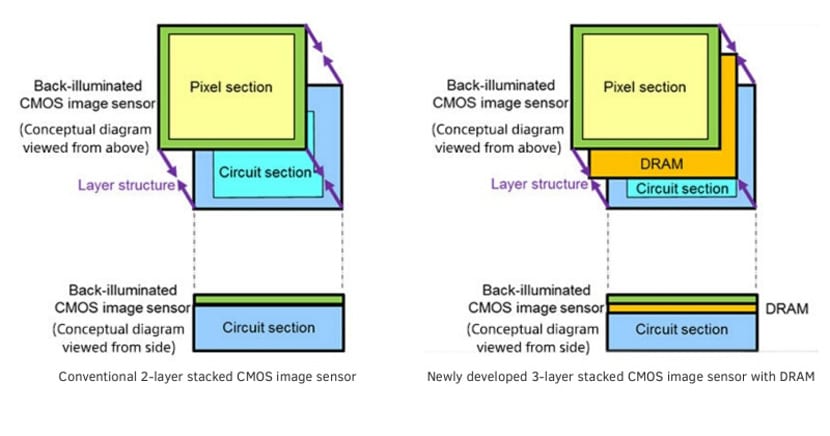El power of the tiny in technology It has allowed us to get closer to all those devices that we carry in our hand, in the car or have at home, not to mention the industry and more services that use the small in a very small space. Engineering and manufacturing have reached such a high level that you don't really know what your ceiling is.
Sony is one of those that takes the cat to the water in photography and now it is when it has risen to the level with one 3-layer BSI CMOS sensor for smartphones that, thanks to modern technology, carry their own DRAM in their guts.
DRAM in an image sensor
RAM is a type of high-speed volatile data storage, which is occasionally associated with processors and computers. But Sony is now exploiting the benefits of that technology to improve the speed of image sensors. And not only that, but it has been able to reduce it to the size of a sensor that can be included in a smartphone.

The question that arises is why you want to implement DRAM or Dynamic RAM within an image sensor. The purpose of RAM is inincrease reading of image sensor data, considering this type of memory as one of the fastest in data storage and access technologies that is affordable by most pockets. In this context, DRAM is located in a "sandwich" between the BSI pixel structure and the underlying circuit layer that handles the signal processing.
The DRAM thus acts as a type of area that can quickly read data that goes to the sensor so they can be downgraded to a slower processor. This means that the sensor can capture the same amount of pixel information in a fraction of a second. Especially for this sensor, it means that 19,3 million pixels can be recorded in just 1/129 fraction of a second, compared to similar amounts required for 1/30 fraction of a second, which is a huge magnification.
Another advantage of including DRAM in the image sensor is that you can capture slow motion at 1.000 fps even at 1920 x 1080 (Full HD) resolutions. The sensor itself is capable of 21.2 megapixels and capable of recording 4K video at 60 FPS or 240 FPS for Full HD. The DRAM sensor capacity is 1 Gigabit, which is practically 125MB.
Sony has not revealed when this sensor will be included in a smartphone, but it would not be too crazy to think that it could be on a high-end Xperia for late this year.
Sony as one of the props
The Japanese company once again demonstrates with this technology that it is perfectly located to earn the trust of many manufacturers to have the best photograph. It only needs to be able to integrate the necessary software into its Xperia range so that it uses its sensors in a better way, since other brands are the ones that, based on algorithms, know how to take advantage of the great hardware presented by Sony.
It is one of the biggest handicaps that Sony and its Xperia range have had, although lately, even in updates to the high-end launched in 2015, the quality of photography has improved considerably. In any case, more is expected from the Japanese manufacturer in this sense when it has the best hardware and even the Google Pixel, which has one of its sensors, has right now the best camera current on a smartphone.
We will only see at the end of the year what is that image sensor capable of which will feature DRAM, so really looking forward to seeing the capabilities of it in that flagship Xperia.


![[APK] Download Sony Music Walkman for any Android terminal (Old version)](https://www.androidsis.com/wp-content/uploads/2019/06/descargar-music-walkman.jpg)